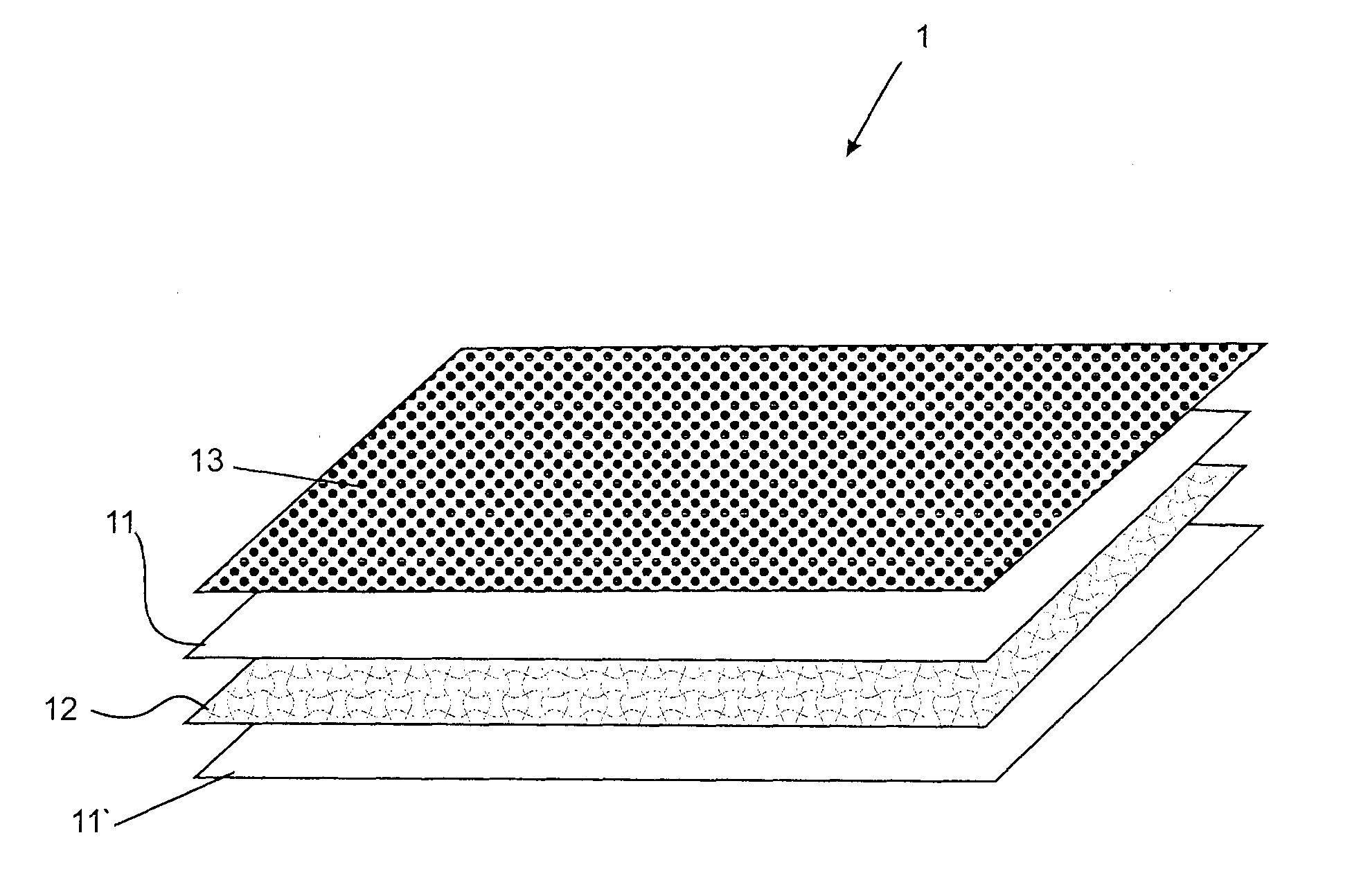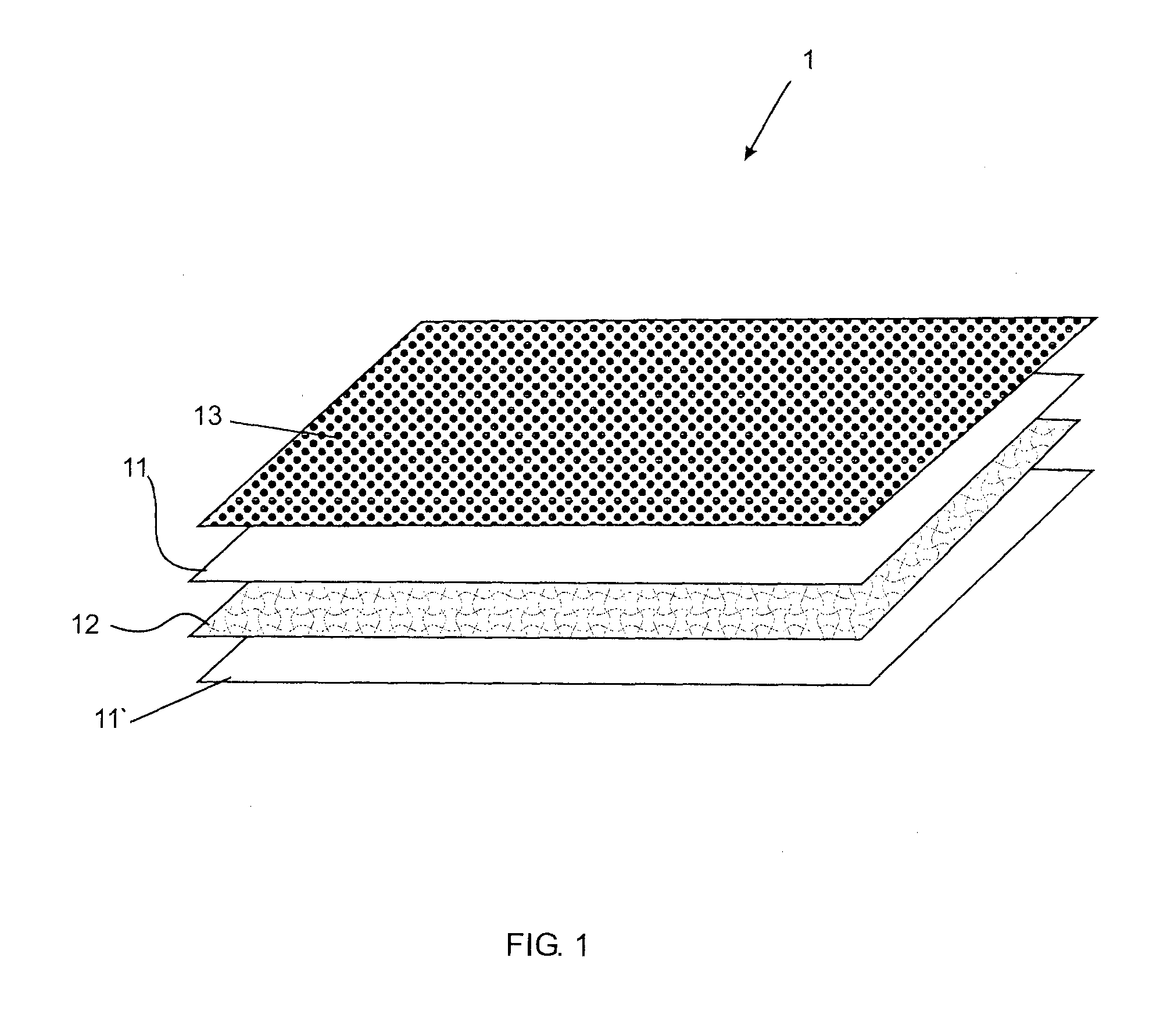A process for manufacturing a composite material, and a composite material shaped with layers
a composite material and manufacturing technology, applied in the field of composite materials and manufacturing processes, to achieve the effects of reducing the cost of a product, reducing the amount of material used, and reducing the processing tim
- Summary
- Abstract
- Description
- Claims
- Application Information
AI Technical Summary
Benefits of technology
Problems solved by technology
Method used
Image
Examples
Embodiment Construction
[0055]The manufacture process and the composite material 1 resulting from this process, object of the present invention, will be described hereinafter with reference to FIG. 1, which represents a possible embodiment of the composite material 1.
[0056]In general outline, the process of the present invention uses a novel way of making interaction of components known from the prior art, namely: a mixture of natural and synthetic fibers and olefin-based components, to create material that can be applied structurally and / or as finish in various applications, as for example, in the inside of automobile vehicles.
[0057]However, the present process employs these components in a specific composition, in steps under particular conditions, so as to obtain a composite material 1 that is provided with properties capable of comprising all the advantages known from the prior art, without the need to add elements to guarantee the structural function.
[0058]Additionally, the composite material 1 will b...
PUM
| Property | Measurement | Unit |
|---|---|---|
| weight | aaaaa | aaaaa |
| weight | aaaaa | aaaaa |
| density | aaaaa | aaaaa |
Abstract
Description
Claims
Application Information
 Login to View More
Login to View More - R&D
- Intellectual Property
- Life Sciences
- Materials
- Tech Scout
- Unparalleled Data Quality
- Higher Quality Content
- 60% Fewer Hallucinations
Browse by: Latest US Patents, China's latest patents, Technical Efficacy Thesaurus, Application Domain, Technology Topic, Popular Technical Reports.
© 2025 PatSnap. All rights reserved.Legal|Privacy policy|Modern Slavery Act Transparency Statement|Sitemap|About US| Contact US: help@patsnap.com


